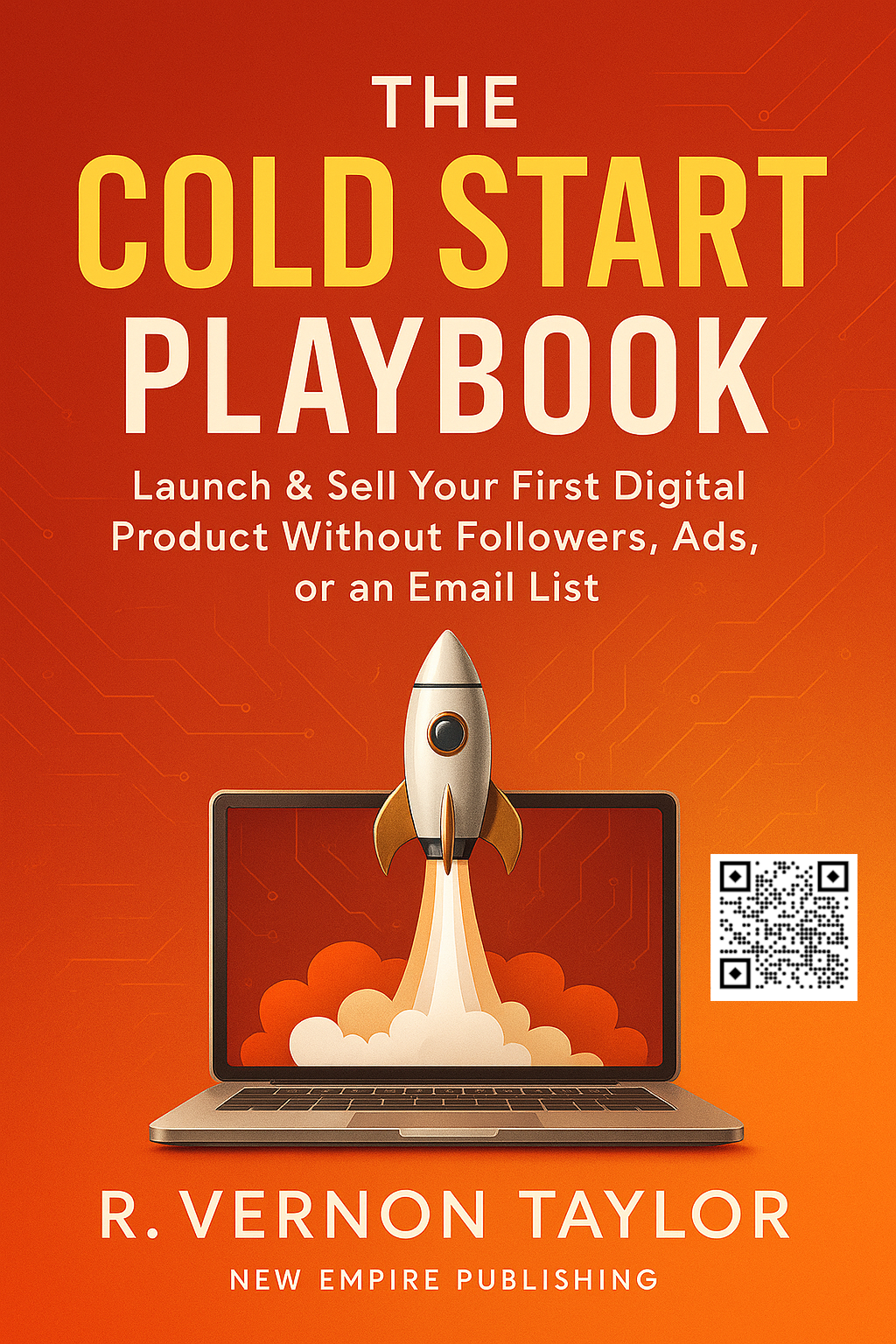The Creators Paradox:
Why Zero Followers Is Your Secret Weapon
The biggest lie in entrepreneurship: "Build your audience first." Here's why starting with zero followers gives you an unfair advantage.
🚨 The $2.4 Billion Lie
Last year, the "build your audience first" industry made $2.4 billion selling courses, coaching, and tools to aspiring entrepreneurs.
Here's what they don't tell you: 89% of people who buy these programs never make their first dollar online.
I used to believe the lie too. For two years, I followed every guru's advice:
- ✗ Posted content daily across 5 platforms
- ✗ Grew to 8,000 Instagram followers
- ✗ Built an email list of 3,000 subscribers
- ✗ Spent $2,400 on Facebook ads
- ✗ Created elaborate sales funnels
Total Revenue After 24 Months:
$347
That's $14.46 per month for 2 years of work.
The Moment Everything Changed
Frustrated and nearly broke, I decided to try something different. Instead of creating more content for my "audience," I joined a small Facebook group with just 247 members.
I stopped broadcasting and started listening. I stopped selling and started serving. I stopped trying to impress and started trying to help.
The Result
In 3 weeks, I made $2,400. More than I'd earned in the previous 2 years combined.
Not from my 8,000 followers. From 3 people in a group of 247.
Understanding the Creators Paradox
The Creators Paradox is the false belief that you need an audience before you can build a business. It's a trap that keeps millions of talented entrepreneurs stuck in content creation mode instead of customer acquisition mode.
❌ The Audience-First Trap
- • Focus on vanity metrics (followers, likes)
- • Creates content for entertainment, not transformation
- • Builds passive consumers, not active buyers
- • Spreads attention across thousands
- • Competes with infinite content creators
- • Revenue depends on algorithm luck
✅ The Customer-First Advantage
- • Focus on revenue metrics (sales, profit)
- • Creates solutions for real problems
- • Builds relationships with ready buyers
- • Concentrates effort on qualified prospects
- • Competes on results, not reach
- • Revenue depends on value delivery
The Math That Changes Everything
Let me show you why having fewer, more engaged people is infinitely better than having thousands of passive followers:
Audience vs. Customers: The Real Numbers
Traditional Approach
10,000
Instagram followers
1%
conversion rate
100
potential customers
Cold Start Approach
50
direct relationships
25%
conversion rate
12-15
actual customers
50 relationships can be more profitable than 10,000 followers
Real Case Studies: Zero to Revenue
Don't take my word for it. Here are three entrepreneurs who used the customer-first approach to build profitable businesses from absolute zero:
Case Study 1: Jennifer K. - Marketing Consultant
Starting Point:
- • 47 LinkedIn connections
- • No email list
- • No social media presence
- • Expertise in Facebook ads
Strategy:
- • Found 3 Facebook groups with her ideal clients
- • Spent 2 weeks helping people for free
- • Used conversation scripts to transition to paid work
Result: $500 first sale on day 19, $2,400 total in month 1
Case Study 2: Marcus T. - Course Creator
Starting Point:
- • 0 followers on any platform
- • Course idea but no audience
- • Previous failed launch (5 sales)
- • Expertise in productivity systems
Strategy:
- • Joined Reddit communities and Discord servers
- • Helped people solve specific problems
- • Pre-sold course based on community feedback
Result: 23 pre-sales before building the course, $3,400 revenue
Case Study 3: Sarah M. - Business Coach
Starting Point:
- • 200 Instagram followers (mostly friends)
- • Coaching certification but no clients
- • Spent $500 on ads with zero results
- • Expertise in mindset and goal-setting
Strategy:
- • Found online communities for female entrepreneurs
- • Offered free 15-minute breakthrough sessions
- • Converted sessions into coaching packages
Result: 5 coaching clients in first month, $3,200 revenue
The Science Behind Why This Works
The customer-first approach isn't just anecdotally successful—it's backed by psychology and behavioral economics:
🧠 Psychological Principles at Play
1. Reciprocity
When you help someone solve a real problem, they feel obligated to reciprocate. This creates a natural sales environment.
2. Authority Through Results
Demonstrating expertise through actual problem-solving carries more weight than theoretical knowledge sharing.
3. Trust Through Proximity
Direct, personal interactions build trust faster than broadcast content consumption.
4. Commitment and Consistency
People who engage in problem-solving conversations are more likely to take action on solutions.
Your Cold Start Action Plan
Ready to escape the Creators Paradox? Here's your step-by-step roadmap:
The 30-Day Cold Start Challenge
Week 1-2: Research & Positioning
- • Identify your core expertise
- • Find 3-5 online communities where your ideal customers gather
- • Study the problems people are discussing
- • Create your "helpful expert" profile
Week 3-4: Engagement & Conversion
- • Start helping people with specific, actionable advice
- • Use conversation scripts to move discussions private
- • Offer deeper help through your products/services
- • Close your first Cold Start sale
Want the Complete System?
Everything you just read is from Chapter 1 of The Cold Start Playbook. The complete system includes step-by-step templates, conversation scripts, and community research tools.

The Cold Start Playbook
Complete System + Templates
Join 500+ Entrepreneurs Who've Escaped the Creators Paradox
23
Days Average to First Sale
$2,400
Average First Month Revenue
95%
Implementation Success Rate